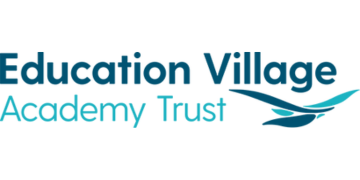Ministers should consider “whole-system reform” of broken special needs education, the government’s spending watchdog has said in a damning report today.
The National Audit Office said the current SEND system is “financially unsustainable”. The current intervention programmes are inadequate to resolve the issues and urgent reform is required.
Despite costs rising, by 58 per cent in a decade, it has “not led to better outcomes for children with SEN”, the NAO found.
“Given that the current system costs over £10 billion a year, and that demand for SEN provision is forecast to continue increasing, the government needs to think urgently about how its current investment can be better spent,” Gareth Davies, head of the NAO, said.
This could be through “more inclusive education, identifying and addressing needs earlier, and developing a whole-system approach to help achieve its objectives”.
Here are the 8 key findings you need to know about …
1. Four in 10 councils face bankruptcy over £4.9bn ticking timebomb deficit
NAO said four in 10 councils may be at risk of declaring effective bankruptcy if an accountancy immunity – known as a statutory override – ends in March 2026.
Since 2020, councils have been allowed to keep high needs deficits off their books. This was due to end in 2024, but was extended until 2026 because 10 councils would have effectively gone bankrupt overnight if they had to move their deficits back onto their balance sheets.
The cumulative deficit could be up to £4.9 billion when the override ends, DfE believes.
Government estimates 50 councils – a third – will have cumulative deficits *larger than their whole reserves* by the end of 2025-26.
A further 16 councils were estimated as needing to spend three-quarters of reserves to clear deficits.
The NAO said as a “matter of urgency” DfE should work with the Treasury and the Ministry of Housing, Communities and Local Government to share with councils its plans for when the override ends.
2. Soaring EHCP numbers would need another £4bn in high needs funding …
The number of education, health and care plans issued has soared since their introduction.
But the DfE estimates, without policy interventions, the number of EHCPs will nearly double from 518,000 in 2022-23, to just over one million in 2032-33.
Worryingly, it predicts that by 2027-28 – forecast costs would exceed the current high-needs budget by between £2.9 billion and £3.9 billion a year (although they say these figures are “uncertain”).

The high needs budget has already risen by 60 per cent to a record-high £10.7 billion a year.
The DfE indicated there is “currently no identified solution which can be implemented quickly and ensure children with SEN continue to have their needs met”.
It is working with other departments to find a long-term solution.
The NAO said DfE and government should now “explicitly consider whole-system reform, to improve outcomes for children with SEN and put SEN provision on a financially sustainable footing”.
3. … as current controversial intervention schemes inadequate
DfE’s two financial interventions for those with the highest deficits – ‘safety valve’ and ‘delivering better value in SEND’ – will “not provide a sustainable system”, the NAO found.
The safety valve programme – where the most cash-strapped councils have been promised £1 billion in bailouts in exchange for reforms to provision – will not “achieve savings quickly”.
In May, DfE assessed that 22 out of 33 councils were on track to realise expected savings. But 28 set target dates to eliminate deficits after March 2026 – when the override ends.

Councils taking part in both programmes forecast cumulative deficits totalling £9.1 billion in 2028-29.
In-year savings from interventions by 2027-28 would total just £0.9 billion, DfE estimates – less than the £1.9 billion estimate in October last year.
However, three years since being launched, DfE does not yet know how these programmes will impact outcomes for children. Critics are concerned it cuts support for youngsters – with some councils facing judicial reviews over their cuts, and another local authority essentially said the savings required amounted to breaking the law.
DfE has “proposed a qualitative evaluation” on the impact of safety valve.
4. Despite system meltdown, Tories didn’t have ‘clear, actionable plan’ for proposed reforms (which were already lagging)
Under the last government, the 2023 SEND improvement plan listed 42 commitments. DfE then developed this into 136 internal actions, including some “concrete and measurable steps” but also “vaguer ambitions”, NAO said.
However, the watchdog found the DfE does not have a “fully developed implementation plan reflecting interdependencies between proposals, how much they cost, and how long they would take”.
NAO said DfE had set up “programme management processes, but has not brought together its initiatives into a clear actionable plan, making it harder to understand progress and make decisions”.
The DfE was not “consistently” tracking progress on the 136 actions, but the watchdog found its progress had been “mixed”.
For instance in May, 17 councils trialling the SEND reforms had missed the original December 2023 deadline to create local inclusion plans. Publication of local and national inclusion dashboards are also way behind schedule.
The SEND plan was published three years after the review was launched amid repeated delays.
The NAO recommended DfE “consistently translates its ambitions into an implementation approach with actions and sufficient detail on how improvements will be achieved”.
But either way, there was “no evidence” the previous plan would “fully address challenges”.
The NAO said that of 60 stakeholders, including nine councils, none felt that the improvement plan would address the systemic problems they saw. There was little focus on workforce and early identification of SEN.
5. Lack of capacity data meant scarce special school cash given to wrong areas …
A Schools Week investigation revealed the a special school capacity crisis, and that the DfE had no idea of the scale of the issue. Some schools had converted therapy spaces into classrooms, while others were breaching building safety rules.
After our story, DfE started collecting the capacity of special schools for the first time last year. It found that two-thirds of special schools were full or over capacity. The NAO said bursting special schools “may lead to poor value for money” as more children may be in expensive independent schools.
On top of this, the DfE had distributed 54 per cent of funding for special free schools to councils it now assesses as having above-average levels of free spaces in existing schools.

Only since 2023 has it invited applications just from areas experiencing greater financial challenges and signs of less state special school capacity.
We’ve also revealed how slow the free school programme can be. The NAO says the DfE expects 36 special schools to open by 2025-26, compared to an estimated 47. And four alternative provision free schools open, compared to six estimated.
NAO said the DfE is “seeking to better understand what settings achieve the best outcomes for children, and where spaces are needed, but because most funding has been allocated, special school capacity may not be optimal”.
DfE should try to understand the “root causes” behind increases in SEN and demand for EHCPs and special school places, NAO said.
6. … and DfE has no idea how much future capacity is needed (or where)
The NAO found the DfE “does not know with confidence how much capacity should be planned, and where, to meet future needs”.
The proportion of children with EHCPs in mainstream schools has been rising from 48 per cent to 55 per cent between 2018-19 and 2023-24.

But DfE said while it now knows the capacity of special schools, government “does not know how many pupils mainstream provision, early years or further education settings can support to understand where provision may need to change”.
“A better understanding of what causes these movements, spaces available and what settings work best for whom would help DfE plan future capacity”.
DfE also recognises it “needs to better understand outcomes” and is carrying out wider analytical work.
7. ‘Limited’ progress on making mainstream schools ‘inclusive’ (with no clarity on what inclusivity even looks like)
Since 2014, DfE has wanted mainstream schools to be more inclusive, “but there is limited evidence of progress”, the watchdog found.
DfE has “not made clear what inclusivity could look like and there are limited incentives for schools to be inclusive”.
They pointed to school performance data focusing on academic attainment, Ofsted not including a separate judgement on SEN (but it is working on this at the moment), and no specific school funding focuses on inclusivity.
“Schools can be incentivised to seek EHC plans to access additional high-needs funding, or exclude pupils with SEN, which conflicts with local authorities’ duties to find children school places and ensure value for money.”
NAO urged DfE to “develop a vision and long-term for inclusivity across mainstream education”.
This should look at adapting funding and accountability arrangements, building evidence on how to support children with SEN and improving parents’ confidence.
8. SEND focus also not priority for NHS
The watchdog found “misaligned incentives, accountabilities and priorities” across the system create challenges in building effective working and a “whole-system approach”.
For example, although supporting those with SEN is a strategic priority for DfE, for the NHS it makes up two among 32 competing priorities for 2024-25.
The NHS has faced criticism for not doing enough on SEND. Stakeholders told the NAO how “gaps in health provision had led to responsibilities and costs for healthcare being shifted onto schools, colleges and local authorities”.
The NAO wants a “more integrated system”, including how identifying and supporting SEN should be prioritised.
The SEND solutions: The NAO’s 9 recommendations
1. ‘Explicitly consider whole-system reform’, to improve outcomes for children with SEN and put SEN provision on a financially sustainable footing
2. Undertake work to ‘understand the root causes behind increases in SEN and demand for EHC plans’
3. Build a more integrated system, including developing a “shared understanding of how identifying and supporting SEN should be prioritised” and how councils can required schools to accept pupils
4. DfE to work with the Treasury and the Ministry of Housing, Communities and Local Government “as a matter of urgency” to ensure each council can “achieve a sustainable financial position once the statutory override ends in 2025-26
5. Develop use of evidence to “better understand how and why pupil numbers change across different settings to assess the need for spaces across local areas and types of setting, and how this will impact, for example, home-to-school transport costs”
6. Develop a “vision and long-term plan for inclusivity across mainstream education”. This should consider opportunities to adapt funding and accountability arrangements to encourage inclusivity, building an evidence base for where mainstream settings can best support children with SEN, and how to improve parents’ confidence
7. Ensure it consistently translates “ambitions into an implementation approach with actions and sufficient detail on how improvements will be achieved, how much they will cost, how they inter-relate, how long they will take and the implementation risks”
8. Undertake a specific exercise, drawing on local authority insights, to identify and share opportunities for efficiencies. This should consider routine reviews of individual EHC plans to assess if they are working, and benchmarks for local authorities to assess how much specialised provision should cost
9. Improve the data, incentives and processes to ensure children’s needs are identified and supported as early as possible, particularly within early years















Your thoughts